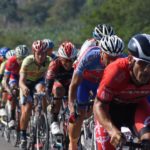MCGREGOR’S CONDITIONING AND MAYWEATHER’S EXPERIENCE
By CEO Robert Forster, PT
September, 2017The energy in the T-Mobile Arena in Las Vegas Saturday night for the McGregor-Mayweather fight was palpable with anticipation for this cross discipline match up of combat sport champions.
The event didn’t disappoint in at least showing the commercial and financial viability of this unique inter-sport event. We will see this trend grow as various sports organization align themselves with entertainment conglomerates.
But what I most appreciated was the athletic performance of both competitors. McGregor impressed many, including the judges in the early rounds, with the progress of his boxing skills, and his ability to stand in front of one of the best boxers of all time and trade punches for 10 rounds.
For his part, Mayweather, showed little ring-rust after what was most probably a decadent couple of years in retirement. After a very patient five rounds he broke from his more recent passive fight strategies when he sensed Connor was fading, and shifted to a more offensive attack game plan to close the deal.
It is unfortunate that McGregor fatigued, it seems to be a consequence of his training strategies since we have seen him fade in his previous MMA fights. He was also too active and kinetic in the first five rounds, and this added to his lack of endurance. Conner later credited Mayweather’s energy conserving poise and composure under pressure as a key difference in their performances.
Although McGregor reportedly trained on a bicycle to increase his endurance in preparation for this fight, which as scheduled for 36 minutes (12 x 3 minute rounds, 45% longer than
the 5 x 5 minute rounds of a MMA championship match), it didn’t help as he “hit the wall” and his performance began to deteriorate after the 25 minute mark in the 6th round. We know if the cycling wasn’t performed at the appropriate heart rate it it would not be successful.“Hitting the wall” of endurance occurs when athletes run out of carbohydrate derived energy to operate their muscles. The key to science based performance training is to assure the limited amount of carbohydrates stored in the muscles and the liver last until the end of the competition. To accomplish this with our athletes; we use low intensity, aerobic workouts to improve their fat burning efficiency, and extend the fat burning capabilities into higher heart rate zones.
With this training we reduce the contribution of carbs to overall energy production and therefore reduce lactic acid accumulation ( a consequence of carbohydrate metabolism) in the muscle cell. This allows fighters to be much more active and less fatigued in the final minutes of each round. More importantly, this more favorable fat/carb source of energy leaves more carbs for the later rounds when most fighters “hit a wall.”
We find this critical for athletes of all sports. It helped Pete Sampras and Maria Sharapova be stronger in the later games of each tennis match. This approach to training enabled the 41 year old Joe Warren to defeat a 24 y/o MMA fighter on conditioning in his last bout. Likewise, aerobic training has helped the 31 y/o Allyson Felix run the fastest 400m race in the world this year, and win a record breaking 3 additional World Championships medals to surpass Usain Bolt in the lifetime medal count.








